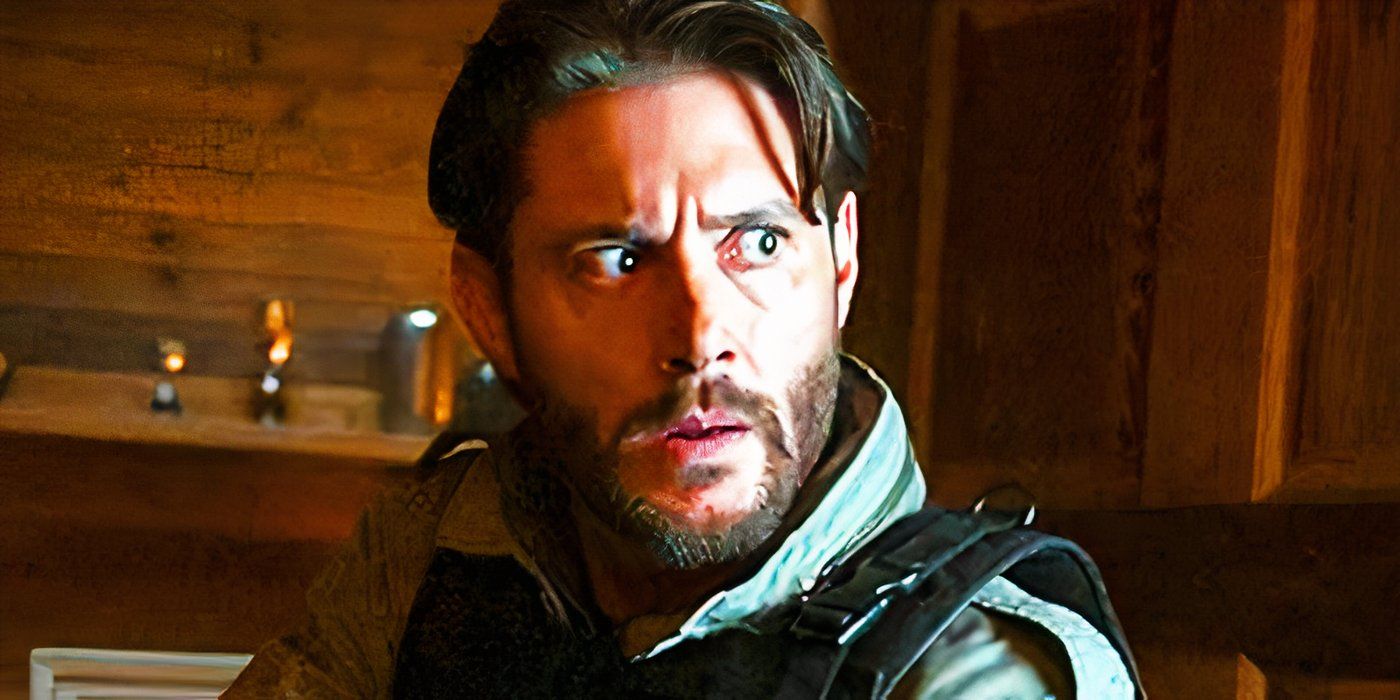Exploring The Max Payne Film Adaptations

Table of Contents
The 2008 Max Payne Film: A Critical Analysis
The 2008 Max Payne movie, starring Mark Wahlberg in the titular role, remains the only cinematic attempt to date to bring the troubled detective to life. While Wahlberg's portrayal captured certain aspects of Max's hardened exterior, the film ultimately diverged significantly from the source material's narrative. The film's plot, while retaining some core elements, streamlined and altered crucial story points, losing some of the nuance and depth of the games' intricate storylines.
-
Casting: While Wahlberg embodied Max's physicality, some argued he lacked the internal turmoil and emotional depth of the game's protagonist. The supporting cast, including Mila Kunis as Mona Sax, faced similar challenges in translating the complex characters from the game to the screen.
-
Plot Deviation: The film took liberties with the narrative, significantly changing the overarching story and altering character relationships. This departure from the source material alienated many fans who were expecting a more faithful adaptation.
-
Critical and Commercial Reception: The 2008 Max Payne film received mixed reviews, praised for its stylish action sequences and visual effects but criticized for its weak plot, underdeveloped characters, and overall deviation from the game's story. Box office performance was also underwhelming, ultimately failing to capture the game's large and dedicated fanbase.
- Positive Aspects: The film's action sequences, particularly those incorporating the signature bullet-time effect, were generally well-received. The visual style, aiming for a dark and gritty aesthetic, largely succeeded in reflecting the atmosphere of the game.
- Negative Aspects: The plot felt rushed and lacked the depth and complexity of the games. Character development was weak, leaving many characters feeling underdeveloped and unconvincing. The film's ending also deviated significantly from the game's conclusion, leaving fans unsatisfied.
- Comparison with Source Material: The film successfully captured the visual style and some action sequences but failed to capture the intricate narrative, compelling characters, and emotional depth of the games.
Comparing the Game and Film: Key Differences and Similarities
A direct comparison between the 2008 Max Payne film and the video game reveals significant differences, particularly concerning narrative structure, character development, and thematic elements. While the film attempted to replicate the dark and violent atmosphere of the game, several key elements were lost in translation.
-
Max's Personality: The film's Max Payne, while possessing a similar brooding exterior, lacked the emotional depth and internal conflict that define the game's protagonist. The film streamlined his tragic backstory, diminishing the impact of his motivations.
-
Narrative Differences: The overarching narrative of the game, deeply rooted in Max's personal tragedy and his pursuit of justice, was simplified in the film. Several crucial plot points were altered or omitted, leading to a less compelling and emotionally resonant story.
-
Supporting Characters: Characters like Mona Sax and Nicole Horne, integral to the game's plot and character dynamics, were significantly altered in the film, diminishing their complexity and importance to the overall narrative.
- Successful Translations: The film successfully captured the dark and gritty aesthetic of the game, along with the signature slow-motion bullet-time sequences. The core concept of a revenge-driven detective was also retained.
- Significant Alterations/Omissions: The film significantly altered the narrative structure, omitted key plot points and character arcs, and simplified the complex relationships between characters. The emotional depth and psychological complexity of Max Payne were also largely lost in the translation.
- Impact of Visual Style: The film's dark and stylized visual aesthetic, while successful in creating a specific mood, ultimately overshadowed the narrative depth and character development, which were crucial aspects of the game's appeal.
The Legacy of the Max Payne Film Adaptations and Future Potential
The 2008 Max Payne film, despite its shortcomings, did have a lasting impact, reminding audiences of the franchise's existence and potential. However, its reception highlighted the challenges of adapting complex video game narratives to the big screen. The possibility of future adaptations—whether a reboot, sequel, or even an alternative media project like a limited series—remains open.
-
Future Adaptations: A more faithful adaptation, utilizing modern filmmaking techniques and a deeper understanding of the source material, could potentially capture the franchise's dedicated fanbase and attract new audiences.
-
Prioritizing Game Elements: A future adaptation should prioritize a more nuanced portrayal of Max Payne's personality, a faithful recreation of the game's complex narrative, and a deeper exploration of its supporting characters.
-
Avoiding Past Pitfalls: Future projects should avoid rushing the plot, prioritizing character development over action spectacle, and ensuring a cohesive and emotionally resonant narrative that remains true to the spirit of the original games.
- Reasons for Success: A remake or new adaptation could succeed by focusing on a faithful recreation of the game's story, developing well-rounded characters, and utilizing modern filmmaking techniques to enhance the visual style and action sequences.
- Elements to Prioritize: A future adaptation should prioritize the dark and gritty atmosphere, the complex narrative, the psychological depth of Max Payne, and the compelling supporting characters.
- Avoiding Past Mistakes: Future adaptations should avoid simplifying the plot, sacrificing character development, and deviating significantly from the source material's core themes.
Conclusion: The Enduring Appeal of Max Payne on Screen – A Call to Action
The Max Payne film adaptations, to date, demonstrate the inherent challenges of translating a complex video game experience to the big screen. The 2008 film, while showcasing stylish action sequences, ultimately failed to capture the emotional depth and narrative complexity that defines the franchise. Understanding the source material and prioritizing a faithful adaptation, while incorporating modern filmmaking techniques, is crucial for any future attempts at bringing Max Payne back to the big screen. The enduring appeal of the Max Payne franchise lies in its compelling characters, intricate storylines, and unique visual style. A well-executed adaptation could recapture this magic for a new generation of audiences.
We want to hear your thoughts! Share your opinions on the Max Payne film adaptations in the comments section below. Do you think a future Max Payne movie is needed? What elements from the games should be included, and which should be left out? Let's discuss the future of Max Payne on screen!

Featured Posts
-
 Synthetic Hair Braids And Black Womens Health A Concerning Trend
May 27, 2025
Synthetic Hair Braids And Black Womens Health A Concerning Trend
May 27, 2025 -
 Explore Guccis Latest Exhibition In Shanghai
May 27, 2025
Explore Guccis Latest Exhibition In Shanghai
May 27, 2025 -
 Could Emegha Join Chelsea Analyzing The Transfer Rumours
May 27, 2025
Could Emegha Join Chelsea Analyzing The Transfer Rumours
May 27, 2025 -
 Indigenous Youth Death Highlights Failures In B C Child Welfare System
May 27, 2025
Indigenous Youth Death Highlights Failures In B C Child Welfare System
May 27, 2025 -
 Tracker Season 2 Episode 19 Air Date Time And Everything You Need To Know
May 27, 2025
Tracker Season 2 Episode 19 Air Date Time And Everything You Need To Know
May 27, 2025
Latest Posts
-
 Death Of Bernard Kerik Remembering The Nypd Commissioners Life And Career
May 31, 2025
Death Of Bernard Kerik Remembering The Nypd Commissioners Life And Career
May 31, 2025 -
 The Life And Death Of Bernard Kerik Former Nypd Commissioner
May 31, 2025
The Life And Death Of Bernard Kerik Former Nypd Commissioner
May 31, 2025 -
 Former Nypd Commissioner Bernard Kerik Dead At 69 A Legacy Remembered
May 31, 2025
Former Nypd Commissioner Bernard Kerik Dead At 69 A Legacy Remembered
May 31, 2025 -
 The Leadership Of Bernard Kerik In The Wake Of 9 11
May 31, 2025
The Leadership Of Bernard Kerik In The Wake Of 9 11
May 31, 2025 -
 Bernard Kerik His Role In New York Citys 9 11 Recovery
May 31, 2025
Bernard Kerik His Role In New York Citys 9 11 Recovery
May 31, 2025
